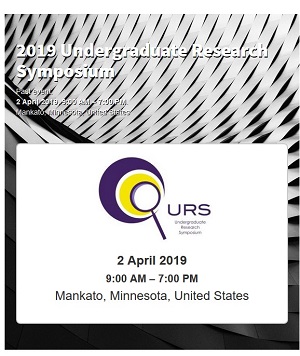Modeling Common Midwest Crops as Roughness Elements
Location
CSU Ballroom
Start Date
2-4-2019 10:00 AM
End Date
2-4-2019 11:30 AM
Student's Major
Mechanical and Civil Engineering
Student's College
Science, Engineering and Technology
Mentor's Name
Nazil Yilmaz Wodzinksi
Mentor's Department
Mechanical and Civil Engineering
Mentor's College
Science, Engineering and Technology
Description
Currently wind energy is dominated by large scale wind farms. However, using horizontal axis wind turbines (HAWTs) can have negative impacts including but not limited to noise pollution and wildlife endangerment. Most of these negative impacts are minimized with vertical axis wind turbines (VAWTs). This research will obtain data on velocity profiles by modeling common Midwest crops as roughness coefficients to support beneficial placement strategies for VAWTs. An open channel will be used to study the development of the velocity profiles above miniature crop fields (roughness coefficients). The open channel is preferred over wind tunnel due to the scale of the experiment, because water has a higher viscosity than air. This will help researchers perform experiments with lower velocities. The crops and their placement orientations are selected as parameters that will affect the wind velocity profiles and thus the optimal placement position of VAWTs. The miniature crop models will be placed in the open channel with varying field design and density based on common farming practices. The channel will then be operated and 2-dimensional velocity profiles at different locations along the flow direction will be measured. This will mimic what would be seen with wind velocity profiles over real crop fields. After the data is collected and multiple velocity profiles are produced, the results will be used to provide accurate velocity information for the height selected. This will allow an average user to optimally calculate the energy production of VAWTs on their own land for small scale energy production.
Modeling Common Midwest Crops as Roughness Elements
CSU Ballroom
Currently wind energy is dominated by large scale wind farms. However, using horizontal axis wind turbines (HAWTs) can have negative impacts including but not limited to noise pollution and wildlife endangerment. Most of these negative impacts are minimized with vertical axis wind turbines (VAWTs). This research will obtain data on velocity profiles by modeling common Midwest crops as roughness coefficients to support beneficial placement strategies for VAWTs. An open channel will be used to study the development of the velocity profiles above miniature crop fields (roughness coefficients). The open channel is preferred over wind tunnel due to the scale of the experiment, because water has a higher viscosity than air. This will help researchers perform experiments with lower velocities. The crops and their placement orientations are selected as parameters that will affect the wind velocity profiles and thus the optimal placement position of VAWTs. The miniature crop models will be placed in the open channel with varying field design and density based on common farming practices. The channel will then be operated and 2-dimensional velocity profiles at different locations along the flow direction will be measured. This will mimic what would be seen with wind velocity profiles over real crop fields. After the data is collected and multiple velocity profiles are produced, the results will be used to provide accurate velocity information for the height selected. This will allow an average user to optimally calculate the energy production of VAWTs on their own land for small scale energy production.
Recommended Citation
Bache, Tyler and Nathan Gebhardt. "Modeling Common Midwest Crops as Roughness Elements." Undergraduate Research Symposium, Mankato, MN, April 2, 2019.
https://cornerstone.lib.mnsu.edu/urs/2019/poster-session-A/2



